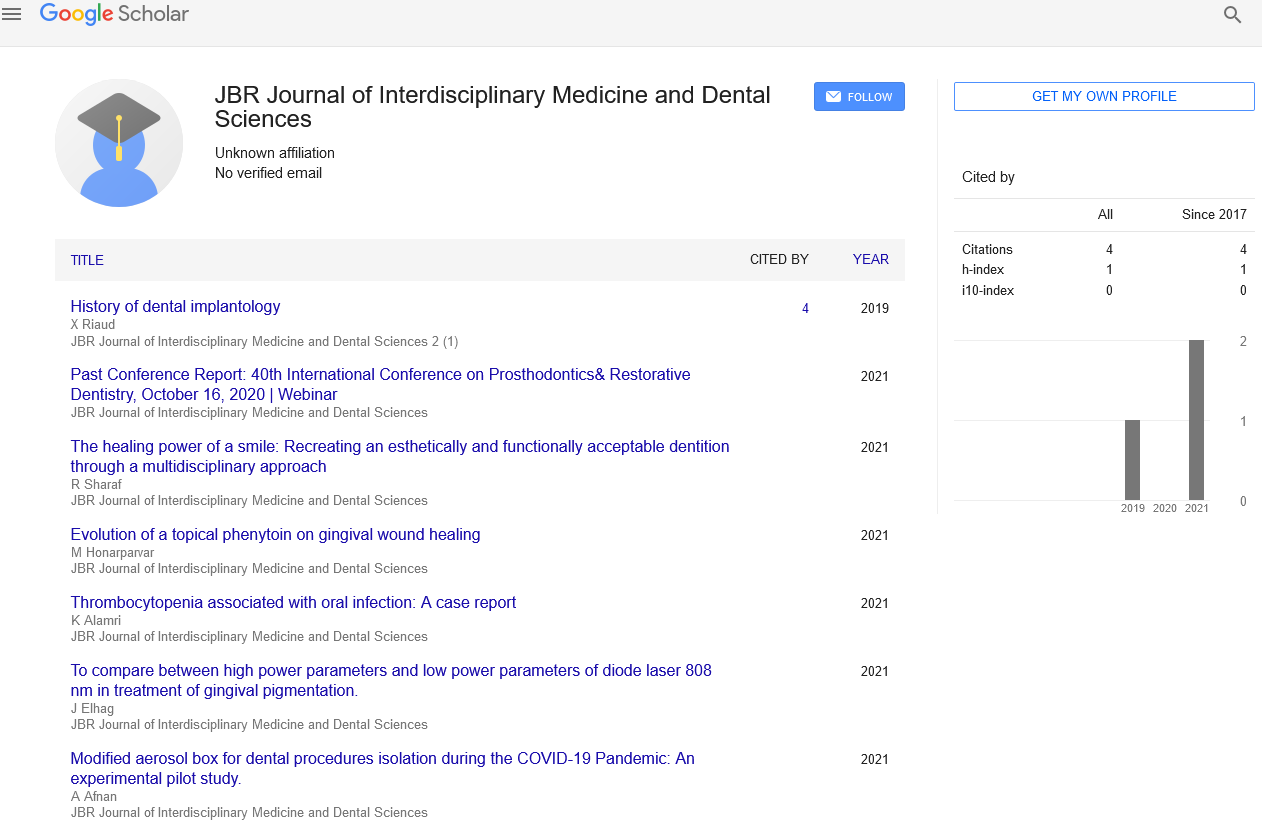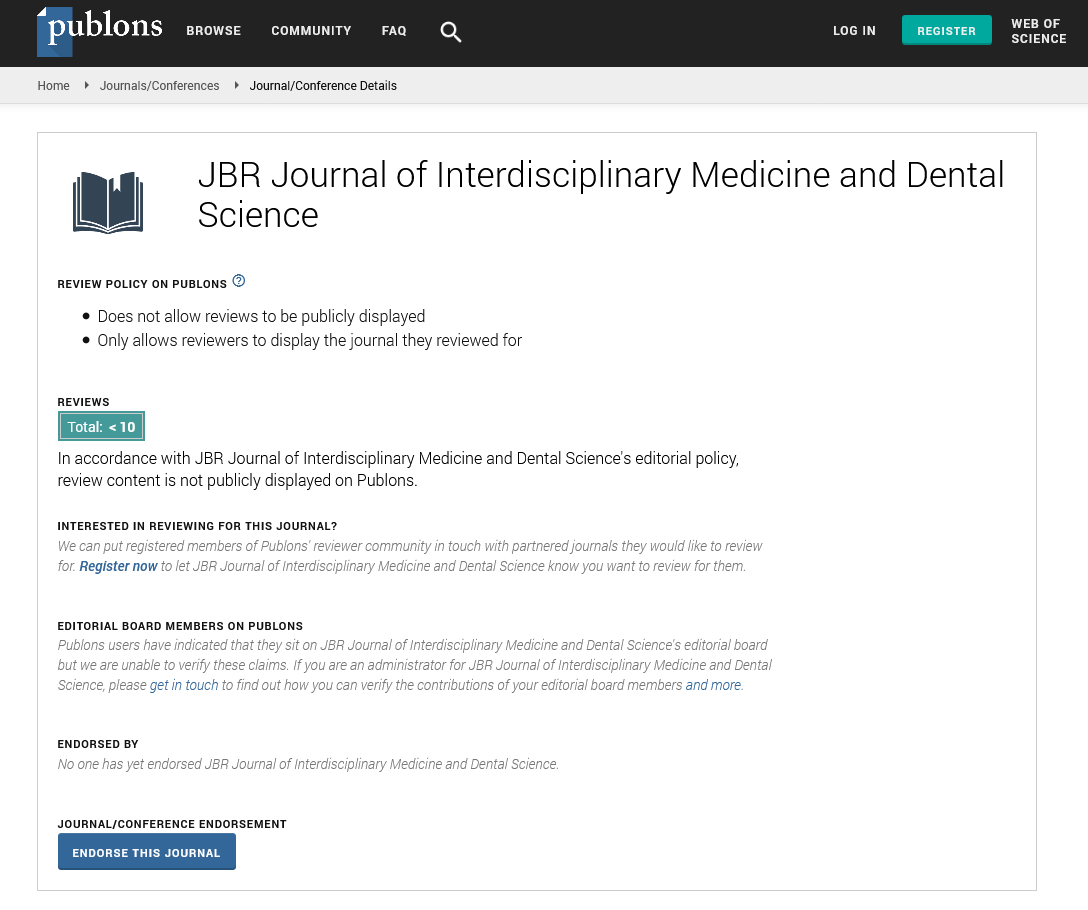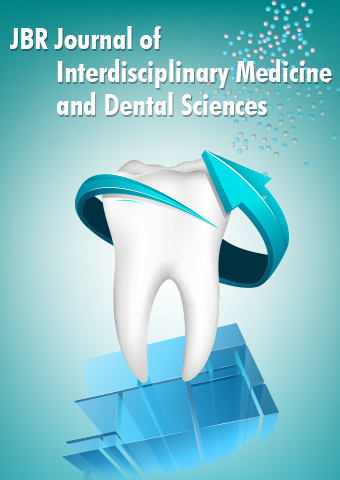Short Communication - JBR Journal of Interdisciplinary Medicine and Dental Sciences (2020) Volume 3, Issue 1
Aerosol evacuation devices: Re-Inventing dentistry
Abhishek Nagaraj
Riyadh Specialized Dental Center, Saudi Arabia
Abstract
Aerosol evacuation has become a necessary factor for safe dental practice. This article aims to mention various levels at which aerosol evacuation should be done and the devices which may be utilized to address aerosol evacuation at these levels. These devices have been formulated and patented as part of an innovation drive to address growing need for such effective devices which may utilize available clinical operatory resources for creation of a safe working environment for dental professionals and their patients. Dental procedures have always depended vastly on powered devices such as ultrasonic instruments, rotary instruments etc. mainly utilizing water spray as a primary coolant. The aerosol particulates which are formed by such an operation have been known to be a source of infection especially once they combine with patient’s saliva, food debris and bacteria or viruses that may be present in the oral cavity of an infected (or carrier) patient. Air-borne aerosols and aerosols deposited on the dental apparatus and surfaces of clinic operatory are equally harmful not only for the dentist and assistant but also may be a huge source of infection for patients visiting the operatory several hours after any infected (or carrier) patient was treated.
Dental procedures have always depended vastly on powered devices such as ultrasonic instruments, rotary instruments etc. mainly utilizing water spray as a primary coolant. The aerosol particulates which are formed by such an operation have been known to be a source of infection especially once they combine with patient’s saliva, food debris and bacteria or viruses that may be present in the oral cavity of an infected (or carrier) patient. Air-borne aerosols and aerosols deposited on the dental apparatus and surfaces of clinic operatory are equally harmful not only for the dentist and assistant but also may be a huge source of infection for patients visiting the operatory several hours after any infected (or carrier) patient was treated.
Many regulating agencies such as CDC and MOH have recommended use of high-volume evacuator HVE for effective aerosol removal. Multiple researchers in their studies have pointed out the absolute necessity of aerosol evacuation, preferably at aerosol’s source of generation. Their reports and recommendations stress on high efficacy of HVE suction devices in performing these tasks. Traditionally, aerosol evacuation has been done using high-volume saliva ejectors. They are not efficient in capturing all aerosol due to their narrow shape to allow for deep intraoral access. A few stand-alone devices powered by heavy motors have been introduced to remove air-borne aerosol particulates, but they have disadvantage of huge cost, noise pollution and most importantly they are usually positioned away from the patient’s mouth by almost a feet thereby rendering them ineffective to the aerosol which may dissipate immediately after exiting the mouth or splash right on the face shield of the dentist or assistant.
According to our clinical analysis, aerosol evacuation can be addressed at various levels as follows
Level I Intra-orally, right next to the origin of aerosol
Level II Extra-orally, immediately in-front of or at working side of patient’s mouth
Level III Extra-orally, as a barrier in-front of patient’s face
Level IV Extra-orally, at a distance to capture air-borne aerosol particulates
Level V Near the hand-motor, to prevent prostheses flash from becoming air-borne
The objective was to design and employ such devices which can attach to existing suction or compressor units of a dental operatory with purpose of utilizing available resources for effective capture and evacuation of aerosols serving motto of “minimum investment – maximum efficiency”
These patented devices have been formulated to be effective in aerosol evacuation at various levels respectively as follows
Level I “Dental Aerosol Evacuation Coupe” with option of attaching disposable HVE suction tips for simultaneous intra-oral suction. Device is powered by high-volume suction unit.
Level II “Aerosol Aspiration Tips” for hands-free aerosol evacuation by use of lip-hook which can be attached to lip or cheeks for use without need for assistant to hold the device in position. Device is powered by high volume suction unit.
Level III “Aerosol Evacuation Funnel” acts as a barrier in-front of patient’s mouth during procedure while simultaneously evacuating aerosol and provides clear vision for operator by use of disposable transparent sheet. Device is powered by high volume or low volume suction unit
Level IV “Aerosol Evacuation Compressor Shell” captures and effectively disinfects air-borne aerosol. Attached to dental chair lamp arm. Device is powered by compressor unit of dental operatory.
Level V “Tidy Bench” to be used on dental clinic table or lab bench next to the hand-motor to prevent denture trimming flash from becoming air-borne while protecting the operator by use of disposable transparent sheets. Device is powered by Vacuum Cleaners.
Several studies are being conducted currently at many centres as part of research to test efficacy of these innovative devices which can effectively and absolutely create safe environment for all. Innovation of these mentioned devices has been a journey in itself from patents to designs to prototyping, evaluation and testing, followed by further prototyping, and to finally arrive at an acceptable effective solution which may be manufactured in higher quantities and used depending on demand. As seen in the devices of all levels, these devices are all powered by suction units, compressors, or vacuum cleaner machines. They have a broad receiving area to capture as much aerosol as possible and they depend on the suction power of units they are attached to for effective function.
These devices do not have any additional mechanism to increase power of suction with exception of Level IV device which has mechanism to improve the flow of air in addition to primary force of compressor by virtue of internal shape as well as external motors or by connection of exit to suction units. Initial prototype results have been promising, especially when used in combination to address multiple levels of aerosol evacuation alternatively depending on indication. Evidence-based feedbacks from users are being applied to make the devices as effective as possible. Further articles will be published in series to explain in detail about working of each device mentioned above.
Conclusion
In advanced technology especially 3D printing has provided us with this unique opportunity to apply and elevate the practice of dentistry way beyond the possibility of any disruption caused by infectious diseases. Innovating devices such as these may be our best answer to succeed over challenges posed by pandemics. Trial and error have always been a part of all innovations which aim to re-invent method of practice. But, without such cost-effective innovations, profitable dental profession may become obsolete or depend perennially on the discounts offered on heavily priced, imported, stand-alone machines. Apart from use of such devices, our recommendations include use of built-in filtration systems within the dental chair or suction units for purified air environment. To unclog and regularly disinfect the air and suction channels for better evacuation of aerosols. Make sure to use personnel protection equipment and pre-procedural mouthwash.


